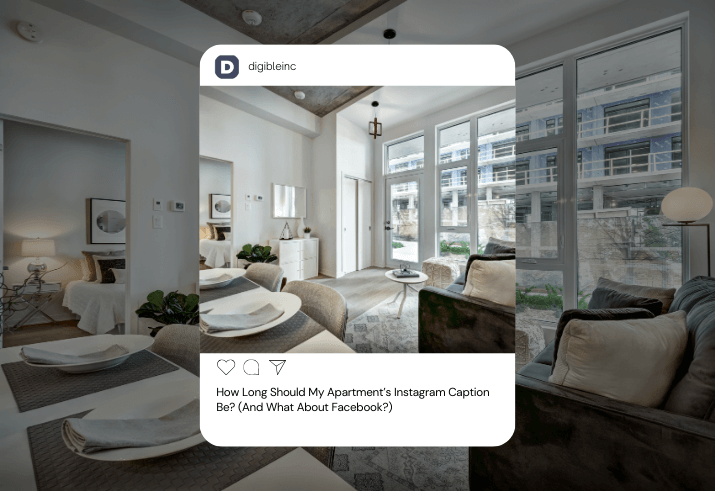What is Geofencing for Apartments?
Updated January 2024
Geofencing, or the hyper-local mobile targeting strategy using very specific geographic locations, has been around for several years now. Once the shiny new toy bursting onto the digital marketing scene, stealing dollars from programmatic display, geofencing is now a tried and true multifamily industry marketing tactic. What has changed though is the sophistication and application in which you can apply the technology. If you’re on the fence (pun intended), consider implementing geofencing into your upper funnel marketing mix.
Geofencing works extremely well for campaigns with physical locations, like Apartments! Our crew has extensive experience running geofencing campaigns for both multifamily, single-family rentals, senior living, and student housing communities. We’re here to show you how to stretch your marketing dollar. While budgets vary from property to property and leasing phase, integrating a product like geofencing, is an optimal strategy. Trying to cram more fences in on a tight budget will dilute your impression share and negatively impact the performance of the campaign.
Measuring Attribution for Geofencing
When it comes to measuring success, whether you call it conversion zones, walk-ins, or in-store attribution, it is important to look at how many physical visits you are getting as a result of the geofencing campaign. Through tracking device IDs, most geofencing platforms have data on device IDs that were served an ad (not even clicked!) and then were at a certain location. Creeped out yet?
This technology has come a long way, but there is still a lot of work to do. Use your instinct and experience when looking at some of these reports to keep things realistic. If walk-ins are reporting more than half the number of total guest cards you are getting for the month, you know something is off.
Here are some tips on cleaning up your data:
Identify the Property's Address to Measure Onsite Traffic
- Many new buildings are using the street corner for the address instead of the center of the building. Have a 750 unit building? The leasing office can be a half mile away from the official Google Maps street address. Use lat/long coordinates instead to get a more accurate read on who is visiting your building.
Optimize Your Attribution Window
- Most digital marketing campaigns use a 30-day ‘lookback’ window for conversions. This means that from the day a user (really a device) is served an ad, they have 30 days to visit the leasing office to be counted as a conversion and served another ad on day 3. That’s right, another 30 days. This can lead to a higher duplication percentage. Narrowing your lookback window down to even 14 days can help significantly to get closer to a unique walk-in number.
Analyze Data
- Look at device ‘dwell-time.’ Through mobile ad server data, if you see a device at an apartment building for longer than a few hours, you can probably assume that the owner of that device either lives or works at the building. You shouldn’t waste ad impressions on that device, and you most certainly should make sure to exclude that device id from any conversion reporting.

Geofencing Strategy for Multifamily
Now that we have a better handle on the ways we can improve our data quality, here are some general rules when choosing your fences.
Location, Location, Location
- Understand your audience. Targeting a fence 5 miles away from an apartment in downtown Denver differs from city to city. However, in Phoenix, a bigger commuter city, people are willing to drive more. We have seen success targeting a fence that is 15 minutes (by car!) away. If that fence is contributing to walk-ins, you can rest easy those are higher-quality leads.
Use Caution with Lease-Up Properties
- When running campaigns for a property in the lease-up phase, be aware of nearby competitors in the area that are also lease-ups, which is often overlooked. Also, is it too soon to throw it back to tip number one above? Most new builds often don’t have Google Maps street addresses yet, so make sure to double-check check your building is literally on the map before launching your campaign.
- We Suggest: Switching your strategy to retargeting for lease-ups. If you are targeting a new build, switching your approach to retargeting people who have been there previously vs. targeting people who are currently there could be really effective.
Prioritize Your Fence
- When it comes to picking fences on a smaller budget consider the following priority: Choose close competitors first, then employer fences, and nearby points of interest, such as shopping centers, hospitals, or military bases.

Geofencing for Student Housing
Targeting student housing properties will differ greatly from multifamily, here are some points to consider for your geofencing strategy.
Get More Granular with Your Fence
- Rather than fencing an entire university, try fencing the latitude and longitude of specific dorms or student housing communities within a 200-meter radius. Consider other fencing categories like libraries, open houses, or student unions. Keeping targeting tight around key fences can lead to higher-quality results.
Research the University
- Does the university have a big international presence? Try fencing the International office of affairs or even the airport! International students have a much different journey when it comes to looking for an apartment, sometimes not even beginning their search until they land at the nearby airport. Which is the perfect time to hit them with your current specials on their phone. If you do go this route, make sure to be very specific on time frame, and only target the airport in those weeks that students are likely to be arriving.
Geofencing for Senior Living
When it comes down to geofencing for Senior Living, there are a few things to consider.
Geofencing Target Audience
- With Senior Living strategy, we are not just targeting future residents that meet the requirements for this type of housing, but often family or children that influence the decision making process.
- Another way to increase leads to your senior living community, is retargeting through your geofence. When someone clicks on your ad and it directs them to your website, you can retarget ads to them. Understanding this broader audience will benefit, as many family members are encouraging a loved one to move to a senior community is not always easy, and can be delayed, from 6-months and beyond. In some cases, avoiding the topic completely until necessary.
As is true with most digital marketing, your message is king! Ensure to update your creative with current specials, quality imagery and copy that gets your brand across quickly — we see the 320×50 perform WAY better than larger units. It is sticky and less intrusive from a user experience standpoint.
Want to learn more about all things geofencing? Contact us HERE.








